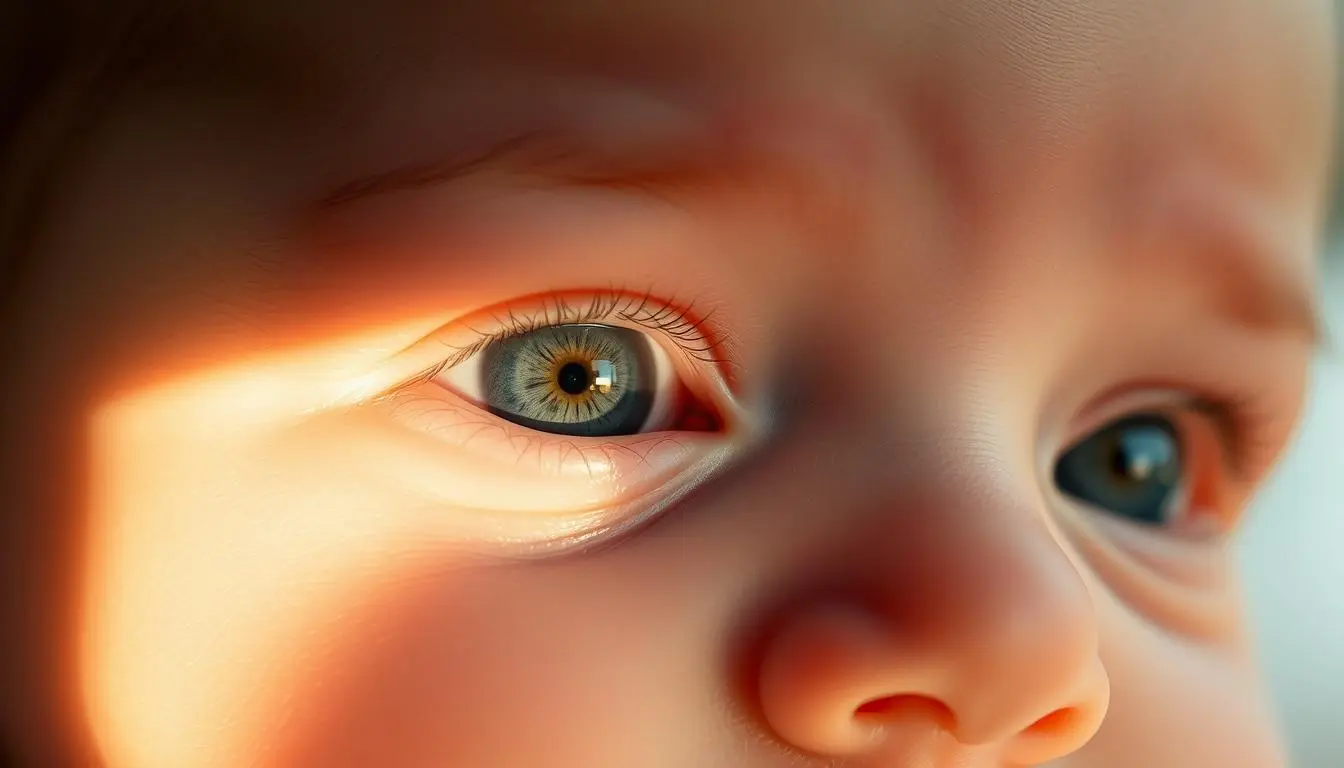How Many Babies Are Born a Day? The world’s population keeps growing, and knowing how many new lives are brought into the world is both interesting and important for planning globally.
Every day, a lot of births happen all over the world. These births shape the future of our communities and the world.
The daily birth rate shows how fast the population is growing. It affects many things in society, like healthcare, education, and economic planning.
👶 Must-Have Baby Products Every Parent Needs – Shop Top Picks on Amazon
Everything you need for baby’s first year — all in one place. 💗
Key Takeaways
- Understanding daily birth rates is essential for global planning.
- The number of births per day has significant implications for population growth.
- Daily birth statistics can influence healthcare, education, and economic planning.
- Population growth rates vary significantly across different regions.
- Accurate birth data is important for policymakers and researchers.
The Global Picture: How Many Babies Are Born a Day?
Daily birth statistics show us a fascinating view of the world’s population. They highlight how many babies are born each day. This growth is key for understanding demographics and planning for the future.
Every day, around 385,000 babies are born worldwide. This number comes from the average annual births. It gives us a glimpse of how the global population grows daily.
The Worldwide Daily Birth Count
Let’s look at the annual birth rate to understand this better. There are about 140 million births each year. Dividing this by 365 gives us the daily average of 385,000 births.
| Time Frame | Number of Births |
|---|---|
| Daily | 385,000 |
| Annually | 140 million |
Birth Rates Per Hour, Minute, and Second
Now, let’s break it down even further. With 385,000 babies born daily, we get about 16,042 births per hour. That’s 267 births per minute and roughly 4.5 births per second.

These numbers show us how fast the global population is growing. They highlight the importance of keeping up with daily birth statistics and the global baby birth rate.
Stat #1: Birth Distribution Across Different Countries
The way births are spread out across countries gives us important insights. It helps us understand population trends and plan for the future.
Countries with the Highest Daily Birth Rates
India and China, the most populous countries, have high daily birth rates. India sees about 67,376 births per day, while China has around 44,792 births daily. Nigeria and the United States also have high rates, with Nigeria at 21,803 births per day and the United States at 10,267 births per day.

Countries with the Lowest Daily Birth Rates
At the other end, some countries have very low daily birth rates. For example, Vatican City usually has zero births due to its tiny population. Tuvalu and Nauru also have low rates, with Tuvalu averaging less than 1 birth per day and Nauru around 1 birth per day. These low rates often come from small populations and aging populations.
| Country | Daily Birth Rate |
|---|---|
| India | 67,376 |
| China | 44,792 |
| Nigeria | 21,803 |
| United States | 10,267 |
| Vatican City | 0 |
Stats #2-4: United States Birth Statistics
Birth statistics in the US give us a peek into the country’s growth and population growth. They show how many babies are born and highlight regional differences. These trends affect healthcare, education, and the economy.
Stat #2: Daily Birth Count in America
About 10,000 babies are born every day in the United States. This number comes from the fertility rate and the number of women of childbearing age. It helps us understand population growth and plan for the future.
Stat #3: Most Popular Birth Days in the US
Some days are more popular for births than others. September 12th is the most common birthday in the US. This is because many babies are conceived during the winter holidays.
Stat #4: Regional Birth Rate Variations Across States
Birth rates differ across states. They are influenced by where people live, their income, and healthcare access. For example, states with more births often have younger people and more conservative views. Here’s a table showing birth rates in some states.
| State | Birth Rate per 1,000 Population |
|---|---|
| Utah | 14.8 |
| Texas | 13.8 |
| New York | 11.0 |
Stats #5-7: Fascinating Birth Timing and Trends
The timing of births worldwide shows interesting patterns. These patterns are shaped by culture, society, and economy.
Stat #5: Most Common Months for Births Globally
Some months are more popular for births than others. In many places, September and October are the top months. This is because many conceptions happen during the winter holidays.
| Month | Average Births per Day (Global) |
|---|---|
| September | 385,000 |
| October | 382,000 |
| July | 378,000 |
Stat #6: Birth Time Patterns Throughout the Day
Babies are born at certain times of the day. Induced labor and cesarean sections have changed this. Studies find that births peak in late morning and early afternoon.
Stat #7: Weekend vs. Weekday Birth Rates
Birth rates vary between weekdays and weekends. Weekdays see more births, possibly because of scheduled inductions and cesarean deliveries. Spontaneous births are spread out more evenly.
- Monday: 15% higher birth rate compared to Sunday
- Tuesday to Thursday: Consistently high birth rates
- Friday to Sunday: Gradual decrease in birth rates
Stats #8-9: Demographic Patterns in Global Births
The story of how many babies are born a day is more than just numbers. It’s about the changing faces of births around the world. As birth trends change, knowing these shifts is key for everyone involved.
Stat #8: Multiple Birth Statistics: Twins, Triplets, and Beyond
The number of multiple births is going up worldwide. This is due to things like fertility treatments and people having kids later. For example, the rate of twins has jumped by about 10% from 2010.
In the United States, the number of twin births has also gone up a lot over the years.
But it’s not just twins. Triplets and even more babies are happening more often, though they’re rare. This trend brings special challenges for families and healthcare systems. It can lead to more risks during pregnancy and birth.
Stat #9: Changing Parental Age Demographics
There’s also a big change in who’s having babies. More people are having kids later in life. This is because of better education and career chances, and new ways to help with fertility.
This change in who’s having babies brings its own set of issues. Older parents might face health problems differently than younger ones. The age of parents can also affect their children’s health and well-being. So, it’s important to keep an eye on this trend.
Conclusion: The Impact of Daily Birth Rates on Our Future
Looking at daily birth statistics shows us a complex world of demographics. With about 385,000 babies born each day, it’s key for leaders, healthcare workers, and economists to understand these trends.
These statistics give us a peek into how populations grow and change. They help us see the challenges and chances that come with these changes. Different countries have different birth rates, making these numbers vital for planning and resource use.
By keeping an eye on daily birth rates, we can get ready for changes in the population. This helps us meet the needs of a world that’s always changing. By studying these trends, we aim to build a better, fairer world for all future generations.
FAQ
How many babies are born daily worldwide?
A lot of babies are born every day all over the world. This helps the world’s population grow.
What is the current global baby birth rate?
The global baby birth rate shows how fast the population is growing. It’s based on the number of births per 1,000 people.
How do birth rates vary across different countries?
Birth rates change a lot from country to country. This is because of things like the economy, culture, and healthcare access.
What are the most common months for births globally?
Some months have more births than others. This can be because of holidays or cultural practices.
Are there any differences in birth rates between weekdays and weekends?
Yes, studies show that birth rates can change between weekdays and weekends. This might be because of things like planned inductions or cesarean sections.
How have parental age demographics changed in recent years?
The age of parents has changed a lot. This affects family structures and population trends.
What are the statistics on multiple births, such as twins and triplets?
There are interesting trends in multiple births. These include the rates of twins, triplets, and more. They are influenced by fertility treatments.
How do daily birth statistics impact population growth?
Daily birth statistics are key to understanding population growth. They show how many new people are added to the population each day.
Where can I find the latest daily birth statistics and global birth count?
You can find the latest birth statistics and global counts from places like the United Nations and national statistical agencies.









